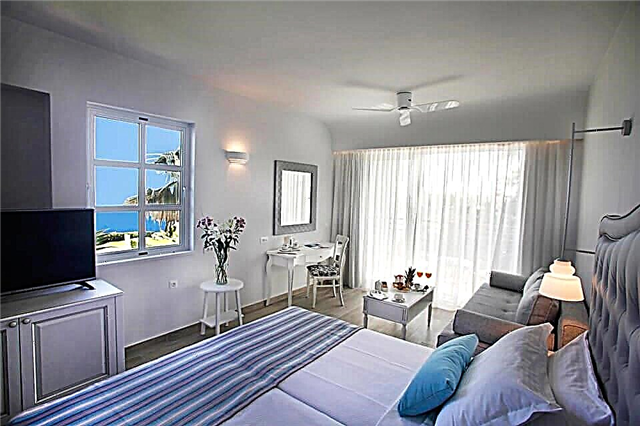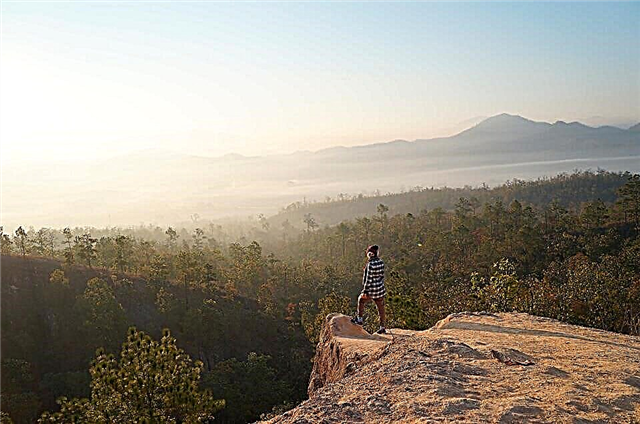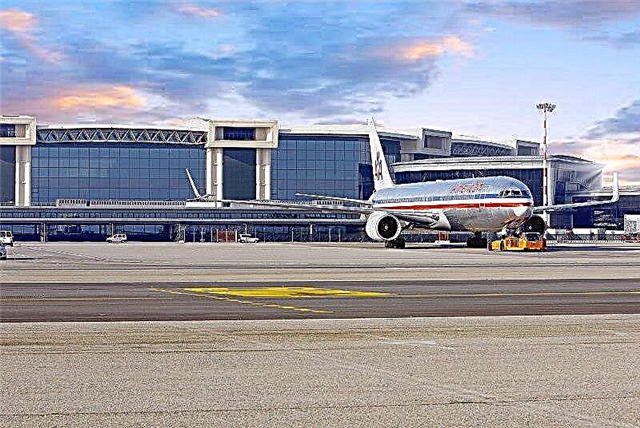On the border of Russia and Mongolia, next to the famous Baikal, is the territory of one of the subjects of Russia, where a little less than a million people live. What is this republic? What do its inhabitants believe in? And what sights are offered to tourists to see?
History
Buryat lands were inhabited in the pre-Mongol period. Archaeologists know that the culture of tiled graves flourished here until 220 BC. Local residents spoke their own language, but did not have a written language. Until the II century AD, Transbaikalia was part of the northern part of the Hunnu state. The Buryat tribes were originally shamanists, but then they began to profess Buddhism.

Holy Trinity Selenginsky Monastery
With the advent of Soviet power, Buryat-Mongolia was formed in the region. After the Civil War, Verkhneudinsk or present-day Ulan-Ude was returned to the young Soviet state. Western Buryatia became part of the RSFSR, and the eastern part of the region, along with other territories, began to belong to the Far Eastern Republic. Buryatia acquired its statehood in April 1992.
Who lives here
Today, 980 thousand people live on the territory of the republic (2018). It is noteworthy that 630 thousand of them are Russians, and 286 thousand are Buryats. The rest of the region's inhabitants are Tatars, Evenks and other small peoples.

Lake Baikal near the village of Khuzhir
Two Buryat cities stand out from the others. This is the capital - Ulan-Ude, in which more than 434 thousand people live, and Severobaikalsk, where there are 23 thousand inhabitants. The other four cities - Zakamensk, Kyakhta, Babushkin and Gusinoozersk have the status of centers of regional administrations.
Great lake
Baikal is the main value of this region. The huge lake is the largest freshwater body of the planet. It looks like a real sea. 9 large rivers flow into the deepest giant lake in the world, and only one flows out - the Angara.

Barguzinsky reserve
Several protected areas have been created along the Baikal shores. Buryatia includes the Barguzinsky Biosphere Reserve, the Baikal State Biosphere Reserve, the Dzherginsky State Nature Reserve, the Zabaikalsky National Park and the Tunkinsky National Park. In addition to them, there are sanctuaries, which from time to time close the hunt for birds and wild animals, so that the livestock of protected animals can be restored.
National parks and reserves are a special area that attracts many tourists. Travelers from all over the world visit Baikal in winter and summer. They take part in ecological expeditions, work as volunteers in protected areas, go in for fishing and hunting.

Suva Saxon Castle in the Barguzin Valley
Healing springs
A huge natural reservoir was formed in the zone of a large fault in the earth's crust, therefore there are many outlets of cold and hot mineral waters around it. To date, more than three hundred natural sources are known. Buryats call them "arshans", which in translation from their native language means "healing water". Almost all arshans are treated as sacred places.
Many people who want to improve their health come to Khakusy and Goudzhekit, which are located in the north of the region. A large number of springs flow into the picturesque Tunkinskaya Valley. They are located at an altitude of about 1500 m above sea level, in the beautiful spurs of the Eastern Sayan Mountains.

View of the Khalyutinsky spring
Buryats and tourists have long mastered the natural resort of Arshan, where there are 48 wells. Thermal water has different temperatures and contains a lot of radon. This happened because a very long time ago there was a large active volcano at this place.
The balneological resort of Goryachinsk is very popular. Here, low-mineral water, rich in silicon, beats, which has a temperature of more than + 54 ° C.

Ivolginsky Datsan from a bird's eye view
Near the most important Buddhist center in our country - the famous Ivolginsky datsan, there are healing Khalyutinsky springs. People come here to cure diseases of the cardiovascular and nervous system, get rid of rheumatism and pain in the joints, diseases of the skin and digestive organs.
The closest to the Buryat capital is the Pitatelevsky hot spring. It is located on the left bank of the Selenga, near Ilyinka. The outcrops of geothermal waters got their name in honor of the doctor A. L. Pitatelev, who was the first to investigate their healing properties.
Museums

Kyakhta Museum of Local Lore
The oldest Buryat museum is the Kyakhta Museum of Local Lore. It was created at the end of the 19th century and today bears the name of Academician V.A.Obruchev. The old collections are kept in a stone building that belonged to the local real school before the revolution.
The capital of Buryatia boasts several museums. The city houses museums of history, ethnography of the peoples of Transbaikalia, nature of the republic and an art museum. Mineralogy lovers are happy to visit the museum of the Buryat Scientific Center and the museum, which is located in the building of the Geological Administration on Lenin Street. To learn about the milestones in the development of Ulan-Ude itself, you should look into the interesting museum of the history of the city.
Buddhist beliefs

Atsagatsky datsan
In the story about Buryatia, it is impossible to ignore the topic of Buddhism. Local residents profess Gelugpu or "yellow faith". The first penetration of Buddhism into the territory of Buryatia took place in the middle of the 15th century. Two centuries later, the Russian empress issued a decree in which Buddhism was recognized as one of the traditional religions of our country.
The formation of Buddhist traditions in the region cannot be called simple. In the 1930s, when the Soviet government was conducting an active anti-religious campaign, Buddhism in Buryatia was almost completely destroyed. All religious leaders were shot or sent into exile.

Itigelov Palace of the Ivolginsky Datsan
Construction of the first datsan for the religious community in Upper Ivolga began only in 1945. Now there is the Itigelov Palace, where the Khambo Lama himself rests. His body is still incorruptible, just as the Buddhist postulates themselves are incorruptible.
Nowadays, Buryat datsans attract many tourists and pilgrims from different cities of the country and from abroad. The world is developing and becoming more tolerant. Many tourists come to the republic to learn more about the religion based on human cultivation and see Buddhist traditions with their own eyes.

Datsan Rinpoche Bagsha in Ulan-Ude
Several Buddhist temples have been opened in modern Buryatia. Small datsans are built of wood in the Asian style and look very colorful and cozy. They hold Buddhist services and religious rituals.
Sports tourism
The rich nature and unique landscapes attract many fans of outdoor activities to the territory of Buryatia. One of the most popular areas of sports tourism is mountainous. Many climbers strive to get to the Munku-Sardyk mountain (3491 m), which has the status of the highest point in Eastern Siberia. From its top, you can admire the delightful panoramas of the surrounding ridges and valleys.

Lake Amut
Many groups of cyclists come to the republic. Some bring bicycles with them, while others prefer to travel around Buryatia on rented vehicles.
Transbaikalia can be safely called one of the best regions of the country for connoisseurs of water tourism. From year to year, rafting on the rivers in kayaks, kayaks and rafts is carried out here. Most tourists are conquered by Irkut, Oka, Barguzin and Snezhnaya. Zun-Murin, Selenga, Khara-Murin, Utulik, Temnik and Turka are equally popular. There are groups that travel directly through the water area of Lake Baikal.

Murochinsky datsan
Souvenirs
Taking into account traditional beliefs, miniature figurines and images of Buddha, which are made of ceramics, wood and ornamental stones, are willingly brought from Buryatia. Among ethnic souvenirs, wooden figurines in national clothes, ringing bells and beautiful Buryat knives are in demand.
Tourists who come to Transbaikalia with children love to buy plush seals. The funny animal has long become one of the symbols of Lake Baikal, so soft toys-seals are in great demand.

Sretensky Convent in Baturino
Of the delicious souvenirs, the leader is a real fish delicacy - delicious Baikal omul. In addition, travelers love the sweet cedar roasted nuts made at the Trans-Baikal confectionery factory "Amta" and the healthy herbal Buryat teas.











